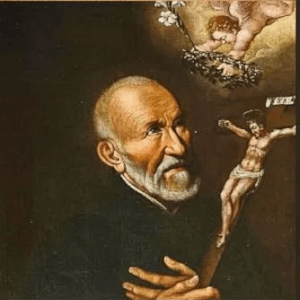
Saint Andrew Avellino was an Italian Theatine priest who became a significant figure in the Counter-Reformation against Protestant heresies. He devoted his life to prayer and penance, inspiring other clergy and the laity to do likewise.
Read the full St Andrew Avellino novena on the novena page. You can also learn more about novenas here.
Who Was Saint Andrew Avellino?
Born in 1521 as Lancelotto Avellino in Castronuovo, near Naples, he studied law and became a lawyer, practicing canon law for a time.
His legal career was cut short when he became disillusioned with the secular aspects of his profession after being involved in a case that made him question the ethical dimensions of law.
After leaving the legal profession, he was ordained a priest and entered the Theatine Order in 1556, a religious congregation founded by Saint Cajetan that was focused on reforming the clergy and promoting a deeper spiritual life.
He took the name Andrew upon entering the order.
St Andrew Avellino became a tireless advocate of internal Church reform, particularly during the time of the Counter-Reformation, which sought to address corruption and moral laxity in the Church following the Protestant revolt. He dedicated his life to prayer, penance, and guiding priests and laity alike in deeper spiritual renewal.
He was known for his ascetic lifestyle and profound humility, traits that endeared him to many. His writings on spiritual discipline and his efforts in moral reformation won him high regard. Avellino also worked to convert sinners, bring about inner renewal, and preach against the vice of simony (the buying or selling of ecclesiastical privileges).
Saint Andrew Avellino died on November 10, 1608, while celebrating Mass. His death was considered a holy event, and many reports of miracles followed after his passing.
He was beatified by Pope Urban VIII in 1624 and canonized by Pope Clement XI in 1712.